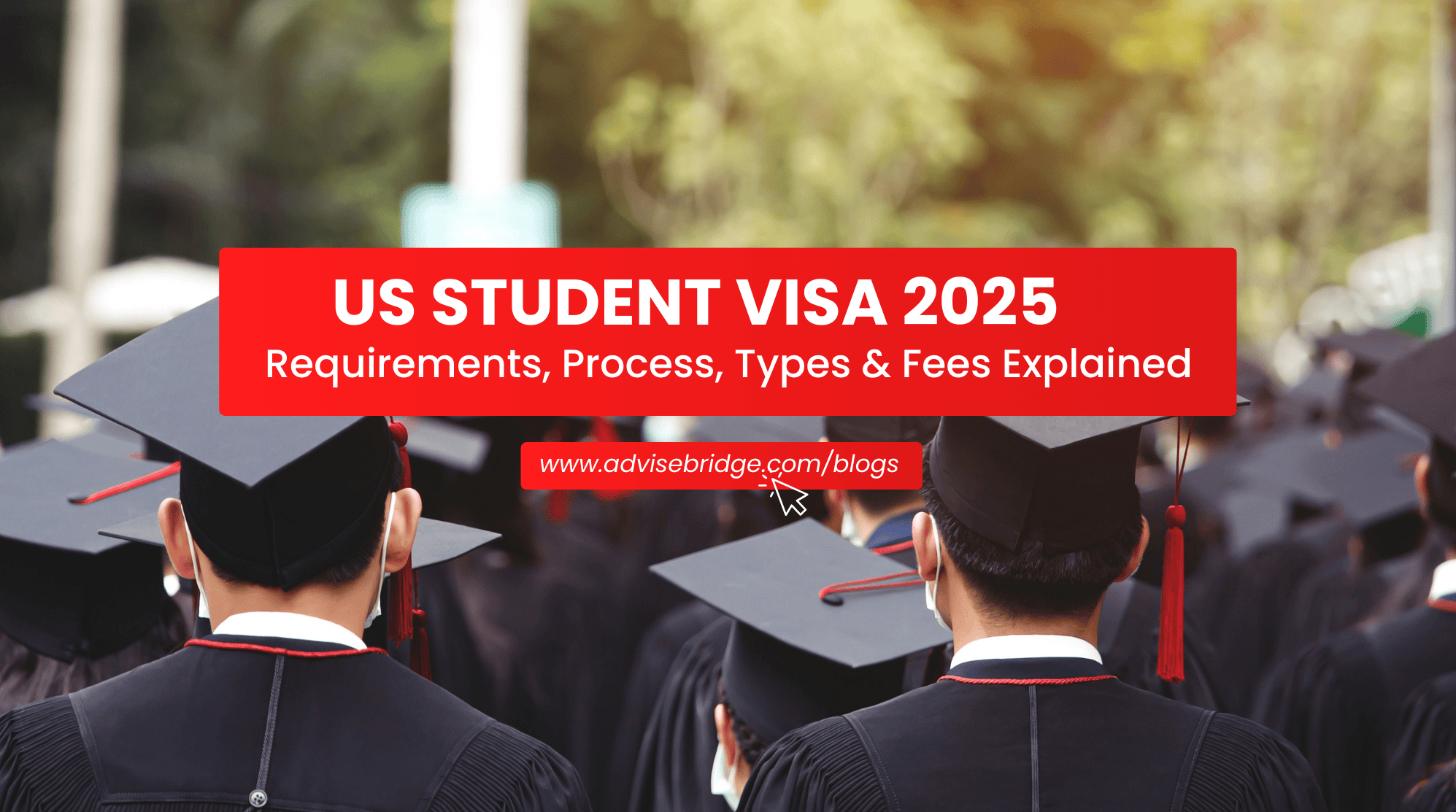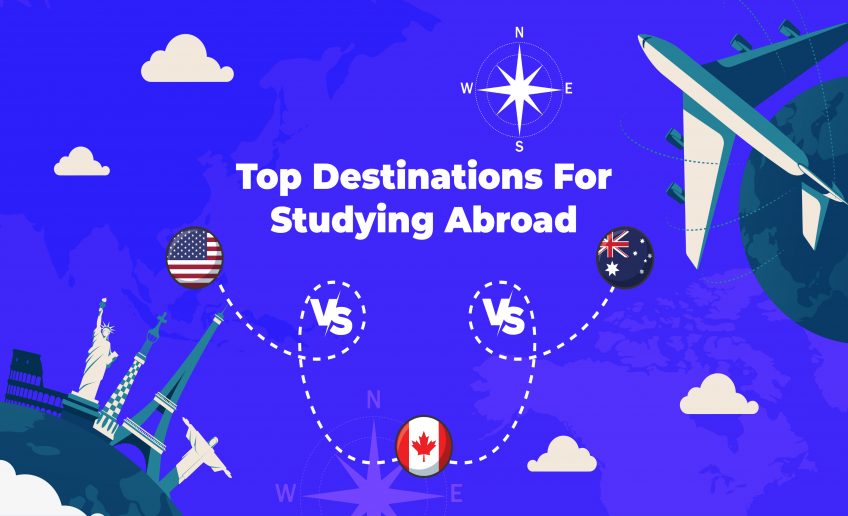Studying in the United States has always been a dream for countless students across the globe—and in 2025, that dream is still alive and thriving. But before you pack your bags and hop on a flight to your dream university, there’s one essential key you need in hand: a US student visa.
Getting a student visa isn’t just a formality—it’s a vital step that opens the door to your future academic journey in the United States. Whether you're planning to earn a bachelor's degree, complete a master's program, gain technical skills, or participate in a cultural exchange, the US offers a structured yet welcoming visa system for international students.
In this guide, we’re going to walk you through everything you need to know about student visa types, new requirements in 2025, the application process, and fees—so you can feel informed, confident, and ready to take the leap. And if you ever feel stuck or overwhelmed, that’s exactly what we at AdviseBridge are here for—to guide you from the first step to your arrival in the U.S.
Why the US Still Tops the List in 2025
Before diving into the nitty-gritty, let’s acknowledge something important: the US remains one of the most preferred education destinations in the world. With thousands of top-ranked universities, world-class faculty, cutting-edge research facilities, and global career opportunities, the US is where potential meets possibility.
But as of 2025, the student visa process has evolved slightly to align with global security and transparency efforts. That means you’ll want to stay updated—and more importantly, prepared.
Understanding the Different Types of US Student Visas
Choosing the right visa type is step one in your study abroad adventure. In 2025, international students typically apply for one of three student visas: F-1, M-1, or J-1. Each one has a unique purpose and eligibility criteria.
1. F-1 Visa – For Academic Programs
Think of the F-1 visa as your passport to traditional academic institutions—be it a university, college, high school, or even a language training center. If you're aiming to pursue a full-time academic course like a bachelor’s, master’s, or PhD, the F-1 is your go-to.
This visa doesn’t just allow you to study; it also gives you the chance to work part-time on campus, apply for OPT (Optional Practical Training) after your studies, and even explore STEM extensions if you’re in a tech-related field. It's built for students who want to immerse themselves in the American academic experience.
2. M-1 Visa – For Vocational Training
Not every career path goes through a four-year university. If your passion lies in hands-on skills, the M-1 visa is your match. This visa is for students attending vocational or technical schools, like those offering culinary arts, auto mechanics, IT certifications, or aviation maintenance.
M-1 visas are more restrictive than F-1. For instance, employment is very limited and extensions are harder to get—but they’re perfect for targeted, skill-based training that’s in high demand globally.
3. J-1 Visa – For Cultural and Educational Exchange
The J-1 visa is broader. It’s for those participating in approved exchange programs that promote cultural understanding. That includes students, interns, scholars, research assistants, or even teachers who are sponsored by organizations, universities, or government programs.
If you're coming to the U.S. not just to study, but to gain cultural exposure, research experience, or professional training, the J-1 might be the best fit. Just remember—some J-1 visa holders are required to return to their home country for at least two years after completing their program.
Still unsure which one’s right for you? Don’t worry. That’s exactly where AdviseBridge can step in and help match you with the right visa and program.
What’s New in 2025: Updated Student Visa Requirements
Visa policies aren’t static—they evolve to match global needs. And in 2025, a few changes and reinforcements have made the process more secure and transparent. But don’t panic! If you’re prepared, these updates will only streamline your journey.
1. Acceptance Letter and Form I-20 or DS-2019
Before anything else, you’ll need to get accepted by a SEVP-certified school (for F-1 or M-1 visas) or an authorized sponsor (for J-1 visas). Once accepted, you’ll receive either:
Form I-20 (for F-1 or M-1)
Form DS-2019 (for J-1)
These forms contain all your program details, from duration to funding sources. Without them, you can't schedule a visa interview or pay key fees. Keep them safe—they're crucial throughout your stay.
2. SEVIS Fee Payment
The SEVIS (Student and Exchange Visitor Information System) fee confirms your intent to study in the US. For 2025, the SEVIS fee is:
$350 for F-1 and M-1 applicants
$220 for J-1 applicants
You’ll need to pay this fee before your visa interview. Once paid, keep the receipt as proof.
3. Financial Proof
US consulates want to be sure you can handle your expenses without relying on unauthorized work. Be ready to show:
Bank statements
Proof of scholarship or sponsorship
Affidavits of support (if family is helping)
Estimated tuition + living costs coverage
If your documents tell a consistent and credible story, your chances of approval rise significantly.
4. Academic Readiness
Make sure you carry:
Transcripts from previous studies
Standardized test scores (if required)—TOEFL, IELTS, SAT, GRE, etc.
A valid passport (at least 6 months beyond your intended stay)
DS-160 confirmation (your online visa form)
Organized, honest documentation makes all the difference.
The Visa Application Process – Step-by-Step (No Surprises)
Even though the idea of applying for a visa might seem daunting, the actual steps are clear and manageable—especially if you have someone like AdviseBridge by your side.
Step 1: Get Your I-20 or DS-2019
This means securing your admission or sponsorship. Choose your university or program wisely. Not all schools are SEVP-certified!
Step 2: Pay the SEVIS Fee
As mentioned earlier, pay the I-901 fee online and print the receipt. It’s a must-have for the next step.
Step 3: Complete the DS-160 Form
This online form covers your background, program, and travel plans. Answer all questions truthfully. Once done, you’ll get a confirmation page with a barcode. Print it—you’ll need it for your visa interview.
Step 4: Schedule and Attend Your Visa Interview
Find the nearest US embassy or consulate and schedule an interview. Be early, dress professionally, and speak clearly and honestly. Carry all your documents in a neat folder—first impressions matter.
The consular officer will ask questions like:
Why do you want to study in the US?
Why this program or university?
How will you fund your education?
What are your plans after graduation?
This is your moment to show you're a serious, well-prepared student—not someone looking to stay illegally.
Visa Fees in 2025 – What You’ll Need to Pay
Budgeting is part of the process. Here’s a breakdown of fees in 2025:
SEVIS Fee: $350 (F/M visas), $220 (J visa)
DS-160 Application Fee: $185 (non-refundable)
Visa Issuance Fee: Varies by country (some countries may have reciprocal issuance fees)
Other Possible Costs: Medical exams, travel to consulate, document translation fees, etc.
It might sound like a lot—but compared to the lifelong return on investment of studying in the US, it's worth every penny.
Still Feeling Unsure? AdviseBridge is Here to Help
If you've read this far, you’re clearly serious about your dreams—and we admire that. But even the most motivated students hit snags during the visa process. Maybe you're worried about documentation, nervous about your interview, or confused about which program best suits your goals.
That’s where AdviseBridge comes in. We specialize in helping international students like you navigate every step of the process, from choosing the right university to visa approval and even post-arrival support.
You don’t have to go through this alone. We’re not just advisors—we’re partners in your education journey.
Ready to Make 2025 Your Year?
With the right planning, clear documentation, and a little guidance, your dream of studying in the US is absolutely within reach. The US student visa might be your ticket, but it’s what you do with it that will shape your future.
So why wait? Whether you’re still choosing schools or already accepted into your dream program, AdviseBridge is ready to help you every step of the way.
Let’s turn ambition into action. Your American dream begins here.







